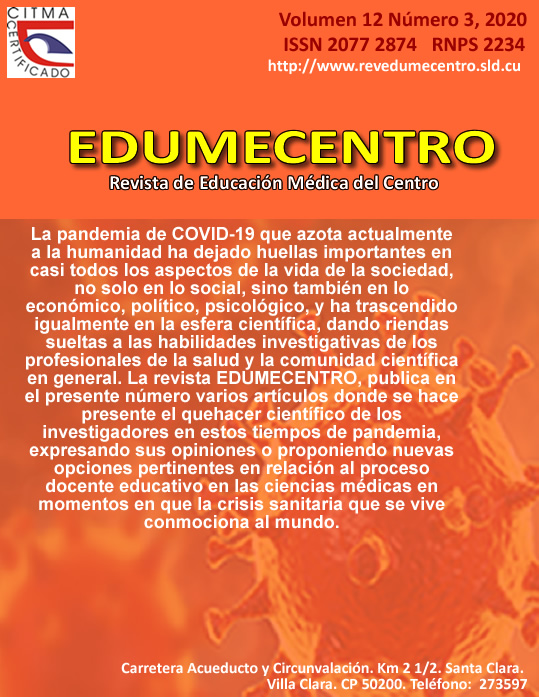Case study: effective method in the diagnosis and treatment of behavioral disorders
Keywords:
child behavior disorders, case reports, psychology, adolescent, education, specialAbstract
Background: behavioral disorders are a health problem that requires multidisciplinary action between institutions from different fields of knowledge. Its treatment through the study of cases as a detailed, descriptive and holistic method of research enables the effective diagnosis of it and also it is a guide towards a comprehensive treatment for its solution.
Objective: to evaluate the effectiveness of the case study method in the diagnosis and treatment for conduct disorders.
Methods: a descriptive study was conducted in Santa Clara municipality during February 2018. Theoretical methods were used: analysis-synthesis method, inductive-deductive method and historical-logical method; empirical methods: documentary analysis method, life history method, participant observation method, key informant interview, family members interview and the case study method.
Results: the methods we used made possible to obtain a preventive diagnosis from the detailed analysis of the psycho-pedagogical and psychosocial characteristics of the child, who was prescribed as sufferer of dissociative identity disorder enhanced and generated by patterns, codes and antisocial styles assumed from friendship circles, with an unfavorable prognosis.
Conclusions: the effectiveness of the case study method in the diagnosis and treatment for conduct disorders was evaluated since it made possible to identify the potentialities of the subject's environment to face this problem and those inherent in him and his family, and the development of strategies that contribute to success in terms of civic behavior in accordance with the Cuban social project.
Downloads
Published
How to Cite
Issue
Section
License
Los autores que publican en esta revista están de acuerdo con los siguientes términos:- Los autores/as conservarán sus derechos de autor y ceden a la revista el derecho de primera publicación de su obra, el cuál estará simultáneamente sujeto a una Licencia Creative Commons Reconocimiento-NoComercial-CompartirIgual 4.0 Internacional (CC BY-NC-SA 4.0) que permite a terceros compartir la obra siempre que se indique su autor y su primera publicación esta revista.
- Los autores pueden establecer por separado acuerdos adicionales para la distribución no exclusiva de la versión de la obra publicada en la revista (por ejemplo, situarlo en un repositorio institucional o publicarlo en un libro), con un reconocimiento de su publicación inicial en esta revista.
- Se permite y se anima a los autores a difundir sus trabajos electrónicamente (por ejemplo, en repositorios institucionales o en su propio sitio web) antes y durante el proceso de envío, ya que puede dar lugar a intercambios productivos, así como a una citación más temprana y mayor de los trabajos publicados (Véase The Effect of Open Access) (en inglés).










